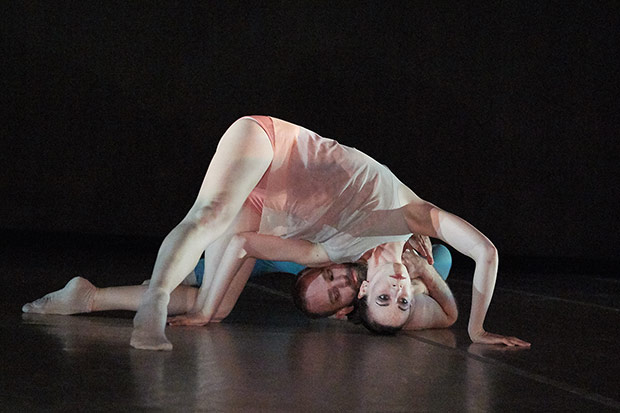
© David DeSilva. (Click image for larger version)
Amy Seiwert’s Imagery
SKETCH 8 – Origin Stories: Lacunae, Shutter, Unlocking/Elpis
★★★✰✰
San Francisco, ODC Theater
28 June 2018
www.asimagery.org
www.odc.dance
It’s been almost two months since San Francisco Ballet’s Unbound Festival closed, but the conversations it sparked still continue. About the choreography; about the collaborations; and about gender. Two women were amongst the festival’s choreographic cohort. And when SFB’s 2019 repertory season was announced, I was heartened to see one of their works set to return as part of Program Three next February. Women’s choreographic voices have been a rarity at SFB in the past decade; I have high hopes that this signals a shift. Time will tell.
But in the wider Bay Area contemporary ballet scene, gender balance in programming is far less of a rarity. Plenty of groups consistently curate shows that include female choreographic voices. Like Smuin, SFDanceworks, Dance Theatre of San Francisco and Amy Seiwert’s Imagery, whose annual summer program, SKETCH, just opened at ODC Theater. This year’s SKETCH is entirely driven by women’s voices, with new pieces by Seiwert and New York-based choreographers Jennifer Archibald and Gabrielle Lamb, both bringing their work to the Bay Area for the first time.
Imagery’s SKETCH has a particular design. Every year (this is the eighth edition) has a new theme – 2018’s is origin stories. Informing that theme is choreographic risk-taking; a charge to artists to work outside of their typical creative patterns. As Artistic Director Seiwert shared in her welcoming remarks, SKETCH is about “investing in process” and “getting choreographers out of their comfort zones.” And so, SKETCH always has an element of gamble – will the experiments yield successful findings or not so much? In this program, all three dancemakers shared a brief blurb outlining their risks for SKETCH, which ranged from considering narrative, mythology and cultural beliefs to new ways of generating movement phrases to alternate responses to music. The night boasted plenty of pay-off, and some misses here and there.
By far, one of the biggest pay-offs was the dancing by company members Sarah Cecilia, Alysia Chang, Aidan DeYoung, Matthew Doolin, Joseph A. Hernandez, Beth Ann Maslinoff, Kelsey McFalls and Austin Meiteen. All eight performed in each piece, adeptly navigating three distinct visions and movement styles. Whether walking through space, cycling through a gestural sequence or dancing a technically demanding phrase they were a real joy to watch. The choreography on the other hand, was more of a mixed bag.
Though very different pieces, I had a similar reaction to Lamb’s Lacunae and Archibald’s Shutter, the first two offerings on the bill. After striking, powerful starts, both pivoted significantly. And with these shifts, the structural throughlines and origin stories in each dance got lost (at least for me). Each possessed impressive movement quality throughout, but as choreographic wholes, Lacunae and Shutter felt a tad disjointed.
Time was the order of the moment as the lights rose on Lamb’s Lacunae. While DeYoung occupied a circular pool of light center stage (design by Matthew Antaky), the other seven dancers stoically took their position around the perimeter. Spaced equidistantly, they looked like numbers on a clock. Maarja Nuut’s score ticked away like an amplified watch, and with halting steps and mathematical precision, the dancers circled the edge of the light. As they trudged forward and back, time felt like it was similarly moving in both directions. Then, the shift. As Lacunae continued, we saw a variety of duets, trios and quartets with Pilates-inspired hinges and yoga-like progressions and poses. The time imagery had disappeared and a meditative tone had taken over. I get the connection between time and meditation as concepts, but what was missing here was a dialogue between the two. Time had started the conversation and then abruptly left so meditation could have its say. I very much enjoyed Lamb’s choreographic syntax, but Lacunae read more like two separate dances rather than a linked concept.
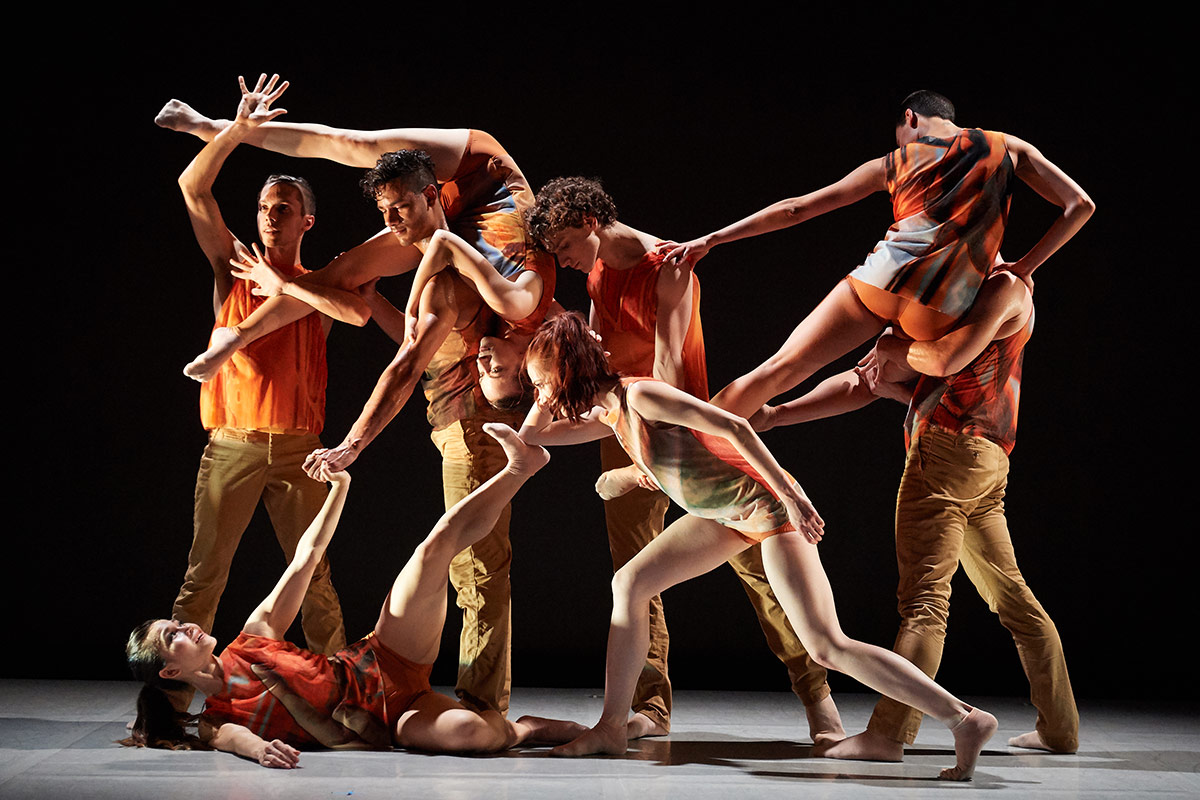
© David DeSilva. (Click image for larger version)
Shutter was indeed an apt title for Archibald’s new work. As the piece began, camera sounds peppered the score and the ensemble posed in a series of tableaux. But this was no ordinary photo shoot. The faint growl of the music (by Anna Thorvalsdottir Seskamol and Angus MacRae) and the fact that we could hear the photography sounds but not see the photographer character, suggested something more ominous, maybe even sinister. But as the dance approached its middle, all this atmosphere and narrative surprisingly gave way to an abstract movement section. Choreographic extremes permeated this middle segment (fluidity marked with sharp isolations), and I absolutely loved the physical vocabulary. No question. But once again, I had lost the connective thread of the dance as a whole. Archibald would return to the tableaux theme at the close of Shutter, which did provide a nice cadence. And there was a gorgeous solo for DeYoung at the end filled with gooey arabesque extensions and deep, melty pliés, but Shutter seemed to strangely toggle between the narrative and the abstract.
I knew ahead of time that Seiwert’s piece was titled Unlocking/Elpis. Though not knowing anything about Elpis, I thought I should get a sense of her place in Greek mythology ahead of SKETCH. I purposely didn’t read too much, but came across multiple sources describing her as the spirit of hope. So when the lights slowly rose on Unlocking/Elpis, I was kind of expecting something light. Right away, I knew that we were in for the opposite. Christen Lien repeated a haunting motif on the viola. The cast was costumed in black with mesh blindfolds covering their eyes (design by Christine Darch). The dancers glared menacingly into space, like they were ready to pounce on their prey. It wasn’t at all what I had anticipated, but what unfolded was fantastic – a riveting one-act ballet with a clear story that never once lost its way.

© David DeSilva. (Click image for larger version)
Because it referenced an existing narrative, Unlocking/Elpis was poised for success from the beginning. Adding choreographic rigor, penetrating character portrayals (particularly by McFalls as Elpis), potent music and live storytelling made for a home run. Lien had a triple presence in Elpis – as composer, violist and storyteller. Throughout the piece, she relayed the tale of Elpis and Pandora’s box, and its narratives of solitude, imprisonment, manipulation and turmoil. Seiwert simultaneously explored these themes in movement. McFalls tried desperately to run and escape only to be thwarted by the rest of the group – ensnaring her in a fabric cage. Dancers were lifted and moved from one place to another without their consent; their spatial realities being steered and controlled. Fingers splayed like talons, twisting and contorting with a venomous energy. And it was so fulfilling to see McFalls’ Elpis and Lien’s storyteller connect onstage. A brief but formidable moment of direct eye contact. A moment of knowing. There’s nothing I find more perplexing than when onstage collaborators fail to acknowledge each other.
Of all three works, Unlocking/Elpis offered the most satisfying viewing experience. And not just because of the dancing, choreography and concept. Because of context. Being acquainted with Seiwert’s work meant there was a baseline to compare, contrast and ask questions. In what ways was Unlocking/Elpis distinct from Seiwert’s other pieces? How did the narrative approach differ? What about the movement? While I did watch a few brief video excerpts ahead of the performance, Archibald’s and Lamb’s choreography was unfamiliar to me. And so, that context was missing. Pretty tough to form an opinion about the ‘after’ (the results of the SKETCH experiment) without the ‘before’ to compare it to. In most programs, this wouldn’t matter at all. But in SKETCH, with its eye on disrupting patterns and upending creative norms, I think familiarity very much matters. Regional debuts seemed a somewhat odd programming choice for something like SKETCH.











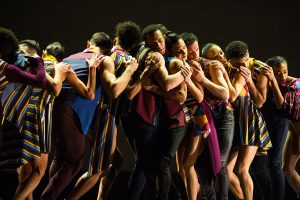
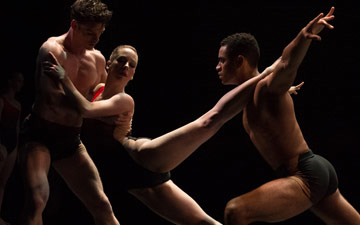
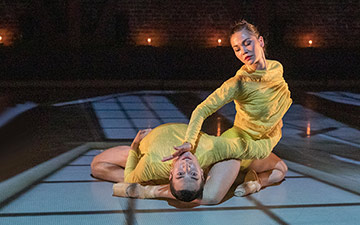
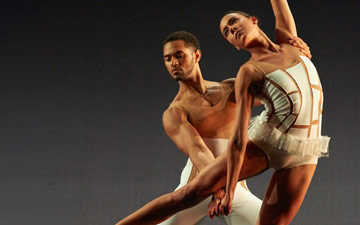


You must be logged in to post a comment.